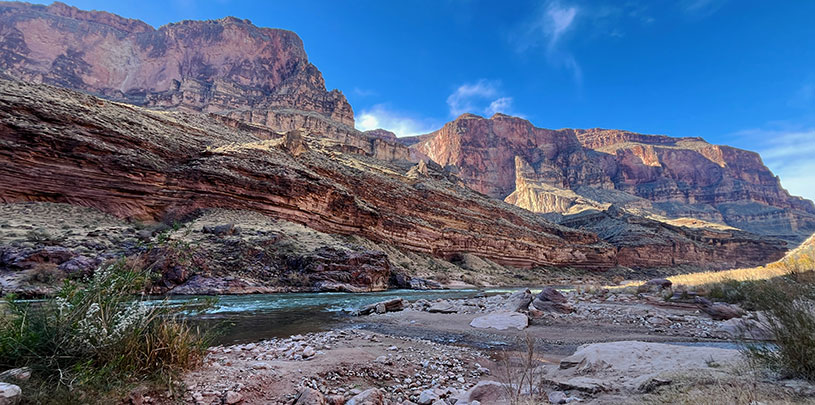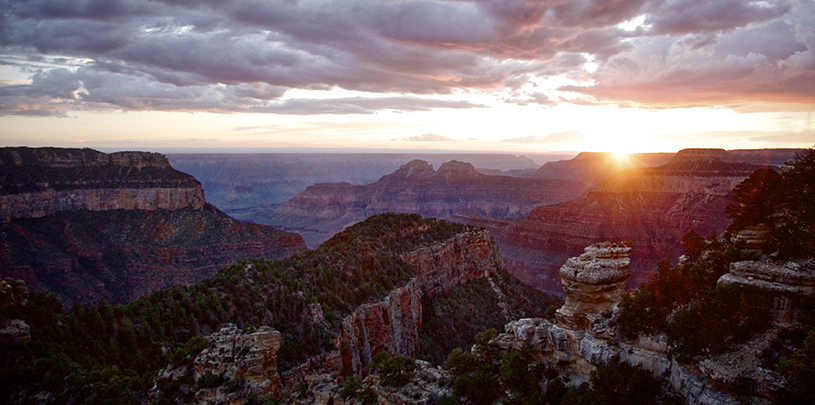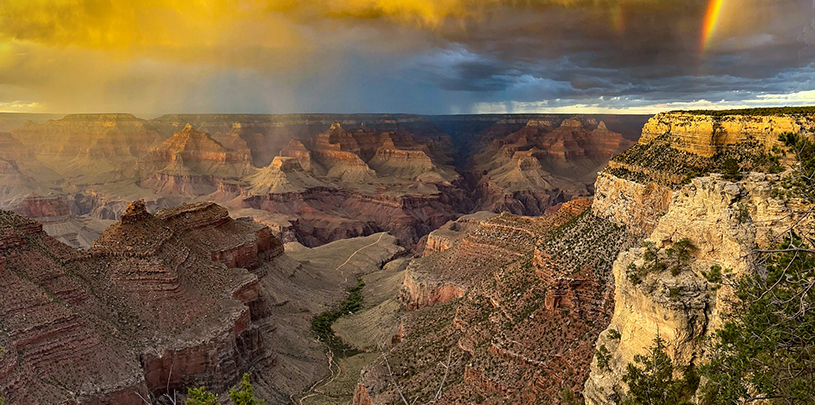 by Lisa Winters, Communications Associate
by Lisa Winters, Communications Associate
In the fall of 2019, a Phoenix-based company, Pumped Hydro Storage LLC, proposed two projects to dam the Little Colorado River a few miles from the boundary of Grand Canyon National Park. In March of 2020, it proposed a third project in Big Canyon, a mostly dry tributary to the Little Colorado River.
The Big Canyon Pumped Storage Project includes four dams: one in the bottom of Big Canyon, and three others on the canyon rim. The plan is to drill three large wells and pump 17-19 billion gallons of ancient groundwater to fill and refill its reservoirs.
Imagine huge pipes crisscrossing the canyon, flooded stream channels, miles of high voltage electrical transmission lines, and the hum-buzz-clack of millions of gallons of water moving between reservoirs to power the massive hydroelectric plant. All in one of the most ecologically important and traditionally significant places of the Grand Canyon.
Here we look at the ecological issues with the Big Canyon dams.
MYTH: There is readily available water to fill the reservoirs.
FACT: Water is scarce in the Southwest.
Look across the desert Southwest and you immediately notice there isn’t much water. In order to avoid the vast ecological issues of damming the Little Colorado River itself, the manager of Pumped Hydropower LLC, Steve Irwin, told reporters, “We’re going to put a dam in there [Big Canyon] and drill wells and fill that up.”
But the aquifer Irwin plans to tap into feeds the Little Colorado River’s springs. Blue Spring, the largest of the Little Colorado River’s springs, bursts forth from the ground after percolating down through rock layers over thousands of years, and nearly half of the Little Colorado River’s flows come from Blue Spring. If built, the Big Canyon project threatens to suck the Little Colorado River’s springs dry. The best place to store water is the way nature does it. Reservoirs — unnatural lakes backed up behind dams — are notorious for losing water to evaporation, especially in dry climates. Reservoirs also have relatively short lifespans, as sand and mud carried through rivers can fill in dams quickly.
MYTH: The Big Canyon project avoids all the aquatic issues.
FACT: The project will destroy the ecological integrity of the Little Colorado River Gorge.
Pumped Hydro Storage naively stated, “We tailored the new one to get it out of the Little Colorado to avoid all of the aquatic issues by putting the lower reservoirs in a dry canyon.” Desert ecosystems are complex and connected, and what affects the landscape upstream will likely trickle down. Holding back floodwaters changes the water conditions that bugs, fish, plants, and other aquatic creatures are used to — the amount of water, temperature of the water, clarity of the water, and other water quality characteristics would be huge disruptions to normal aquatic life.
MYTH: The project will not significantly affect Little Colorado River fisheries.
FACT: There is huge risk to the continued existence of humpback chub.
Any dam in this drainage would devastate the precarious comeback of the endangered humpback chub. This tough little desert dweller has lived nowhere else but the Colorado River basin for millions of years, and the warm, muddy waters of the Little Colorado River is its last best place to breed in the lower basin. A dam on a side tributary introduces a slew of concerns such as water quality, water quantity, habitat destruction, and competition or predation from invasive fish species.
The loss of Colorado pikeminnow, bonytail chub, and razorback suckers from the Grand Canyon are past examples of the irreparable harm that dams evoke.
MYTH: The dams have been approved.
FACT: The dams have not been approved, the Federal Energy Regulatory Commission has issued preliminary permits (for the first two proposals) to study the feasibility of the projects.
Despite outspoken concerns and objections raised from the Navajo Nation, the Hopi, Havasupai Tribe, Hualapai Tribe, U.S. Department of the Interior, Arizona Game and Fish Department, and many others, the Federal Energy Regulatory Commission has approved preliminary permits for the Little Colorado projects and is considering permitting the Big Canyon project. These permits do not mean the company can break ground anytime soon, but do give the company three years to conduct surveys, determine the feasibility of the projects, and prepare cost estimates.
The preliminary permits do not grant right of entry to access the land to conduct said feasibility studies, so Pumped Hydro Storage will need to reach out to the Navajo Nation for permission.
MYTH: There’s nothing you can do about it.
FACT: If the company decides to move forward and license the project, you’ll have another opportunity to weigh in.
In order to pour concrete, pave roads, or build transmission lines, Pumped Hydro Storage has to file a final license application within the next three years. At that point, the Federal Energy Regulatory Commission will analyze the project’s compliance with relevant laws, require tribal consultation, and open up another public comment period. Queue: you. Your voice is crucial in helping to protect the Little Colorado River.



